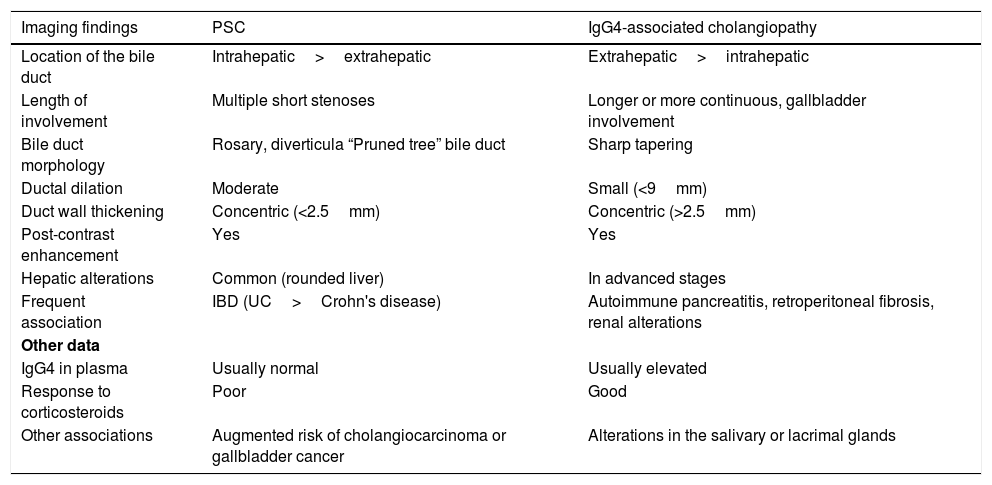The idiopathic chronic cholangitides comprise a group of hepatobiliary diseases of probable autoimmune origin that are usually asymptomatic in the initial stages and can lead to cirrhosis of the liver. Elevated cholestatic enzymes on blood tests raise suspicion of these entities. Among the idiopathic cholangitides, the most common is primary sclerosing cholangitis, which is associated with inflammatory bowel disease and with an increased incidence of hepatobiliary and digestive tract tumours. It is important to establish the differential diagnosis with IgG4-associated cholangitis, primary biliary cholangitis, and secondary cholangitides, because the therapeutic management is different. Magnetic resonance cholangiopancreatography (MRCP) is the best test to evaluate the intrahepatic and extrahepatic biliary tract, and MRI also provides information about the liver and other abdominal organs. An appropriate MRCP protocol and knowledge of the different findings that are characteristic of each entity are essential to reach the correct diagnosis.
Las colangitis crónicas idiopáticas son un grupo de enfermedades hepatobiliares, de probable origen autoinmune, que suelen ser asintomáticas en sus estadios iniciales y pueden evolucionar hacia cirrosis hepática. La sospecha se establece al encontrar elevación de las enzimas de colestasis en analíticas de sangre. Entre las colangitis idiopáticas, la más frecuente es la colangitis esclerosante primaria, asociada a la enfermedad inflamatoria intestinal y que conlleva una incidencia aumentada de neoplasias hepatobiliares y del tubo digestivo. Es importante establecer el diagnóstico diferencial con la colangitis asociada a IgG4, la colangitis biliar primaria y colangitis secundarias, puesto que el manejo terapéutico es diferente. La colangiopancreatografía por resonancia magnética (CPRM) es la mejor prueba para la valoración de la vía biliar intrahepática y extrahepática, y el estudio de RM proporciona información sobre el hígado y el resto de los órganos abdominales. Un adecuado protocolo de CPRM y el conocimiento de los distintos hallazgos colangiográficos característicos de cada entidad son esenciales para alcanzar un diagnóstico correcto.


















